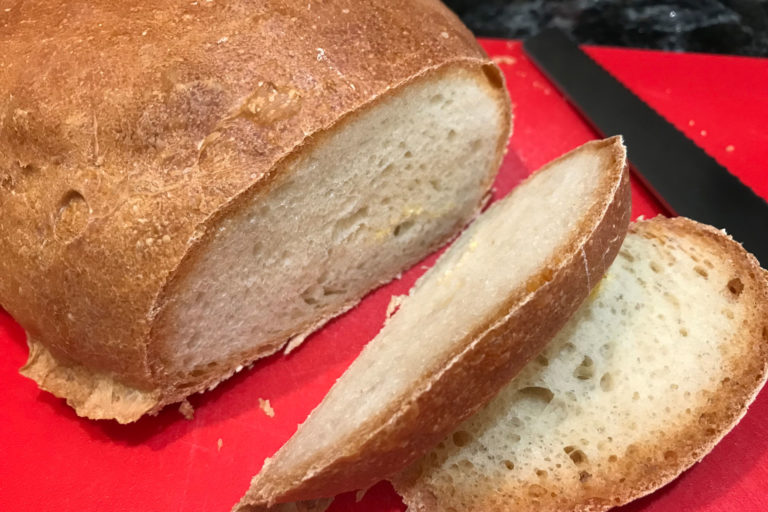This was my fifth loaf from Beard on Bread. (A continuation of my silly little project that involves trying every recipe in this classic cookbook. I started documenting my trials and tribulations after my fourth loaf.)
The prep
In the recipe’s headnote Beard explains that this type of bread is known as a “sponge loaf,” which means that you “make a soft yeast mixture and let it refrigerate one or two nights to start fermentation before you continue with the recipe.” I’ve never really tried a sponge loaf before so I didn’t know what to expect. Here’s what the sponge looked like after an overnight stay in the fridge:
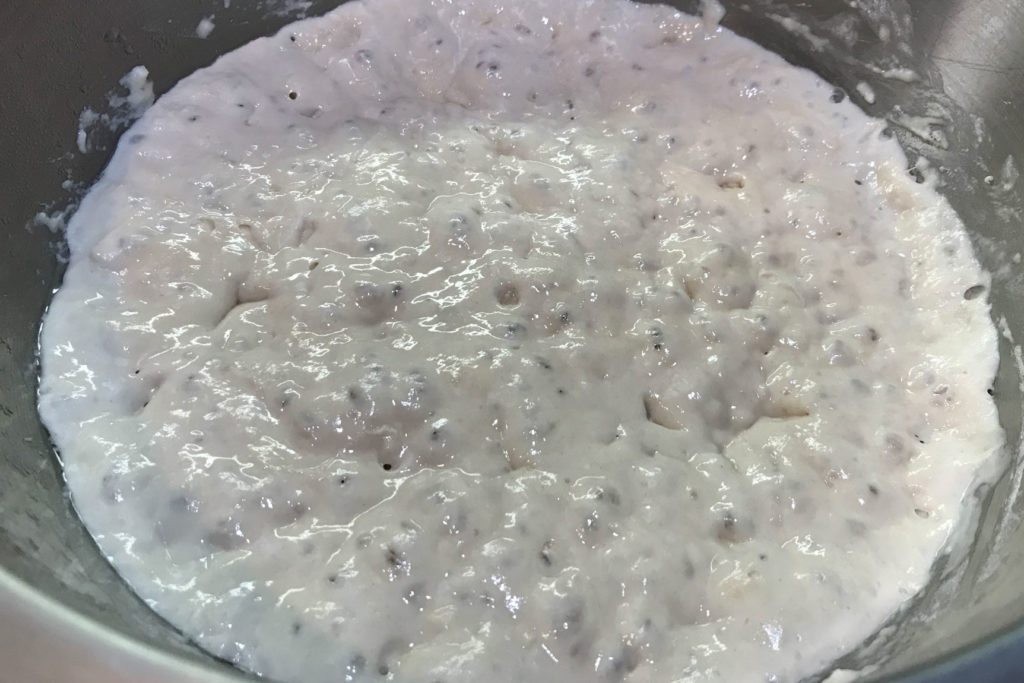
I had a lot of fun punching down the sponge; it certainly had a mind of it’s own and put up a bit of an unexpected fight.
NB: There are FOUR RISINGS required for this bread if you count the overnight rising of the sponge. Two of these are in-bowl risings, the final rising is the shaped loaf in the pan. Not counting the sponge resting in the fridge, the total time required for the other three risings is 3½ hours to 5¾ hours. My risings might have totaled 4½ hours total because I had a baking deadline.
I kneaded this bread in my KitchenAid mixer before the first in-bowl rise, after that, I kneaded by hand. Beard specifies kneading before the first in-bowl rise until the dough is “smooth, elastic, and resilient to the pressure of your fingers,” which for me was hard to assess, especially when the dough was hanging from the dough hook. I bit of resistance when poked seemed good enough.
Anywho: here’s how the risings looked:
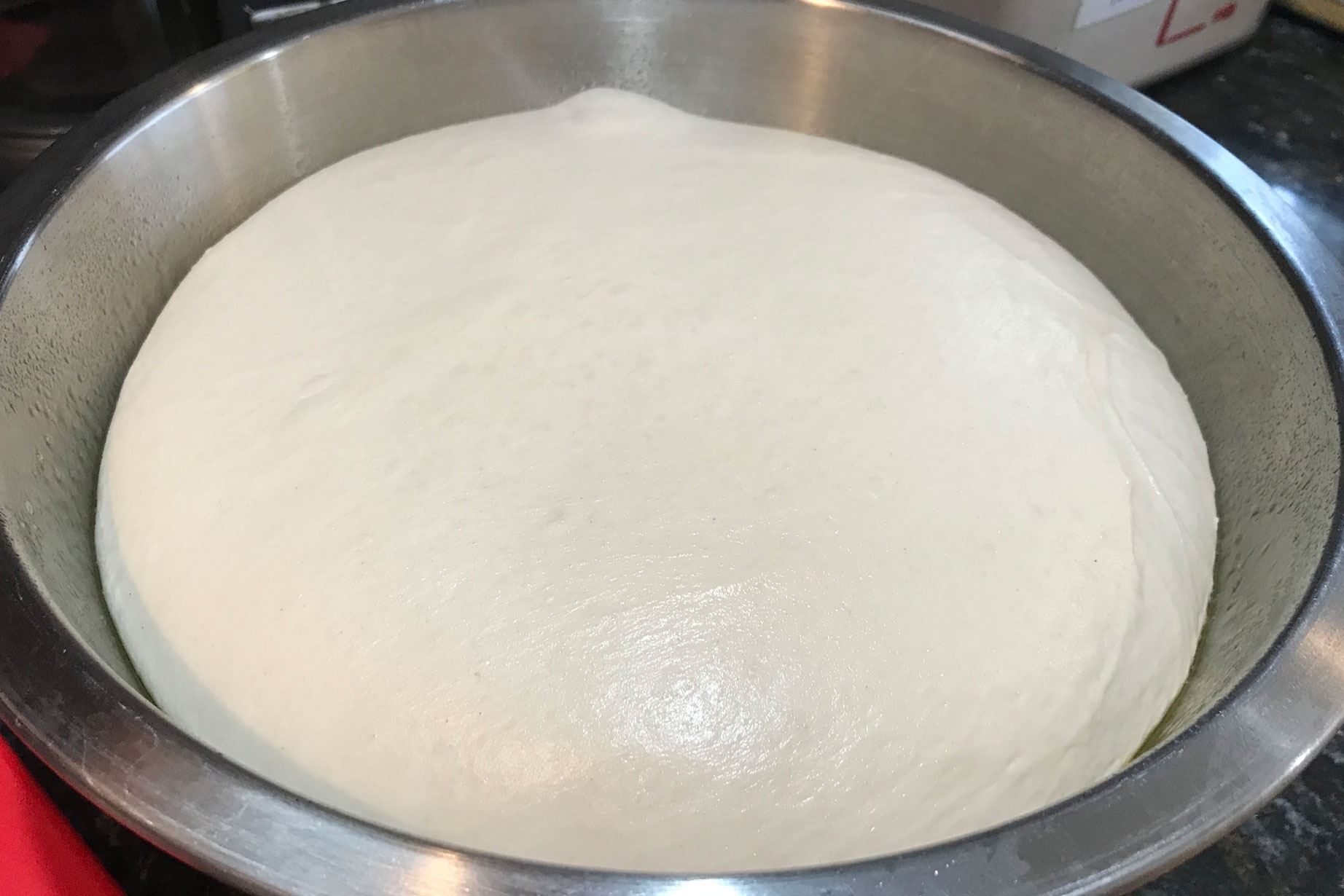
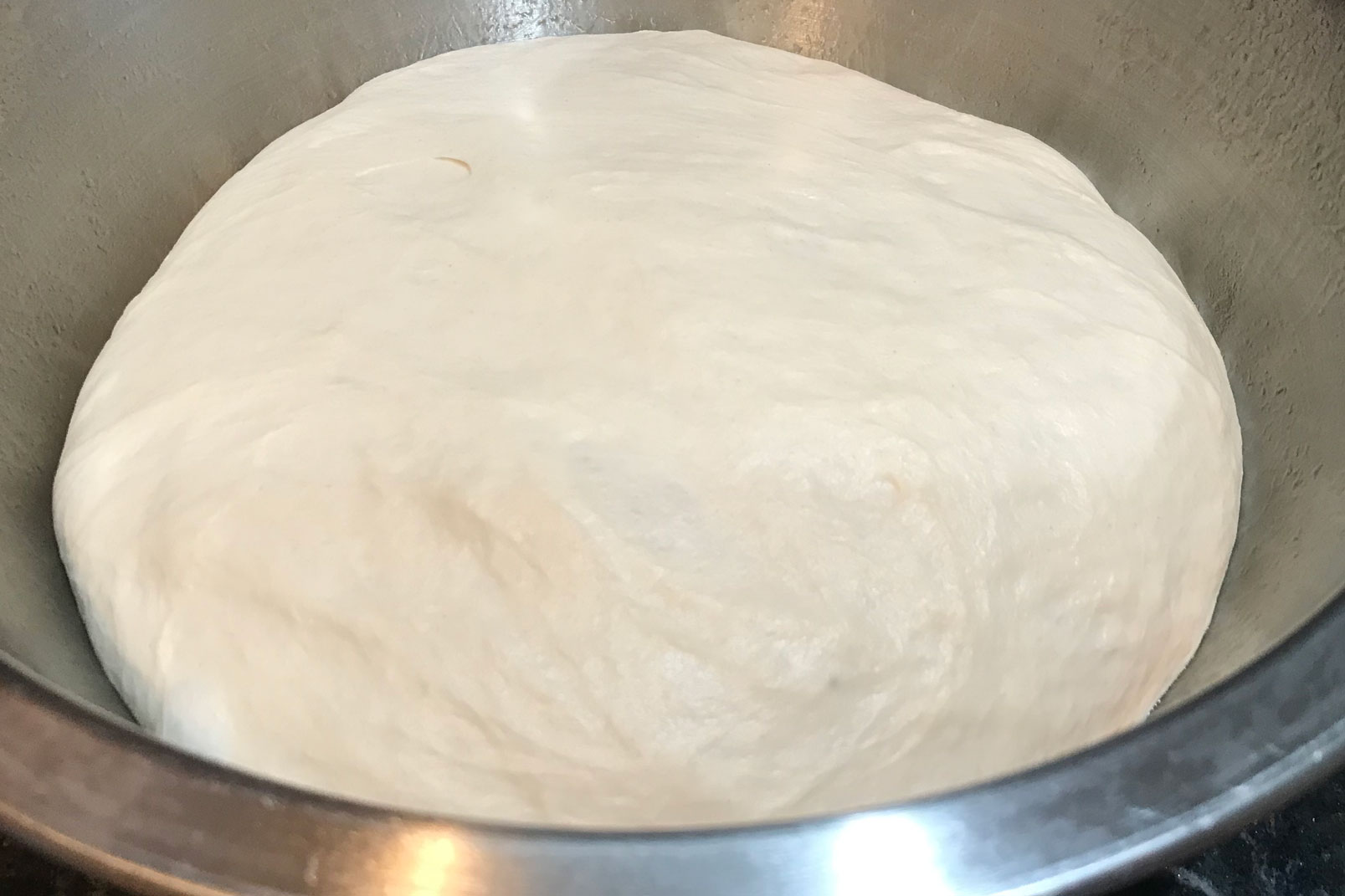
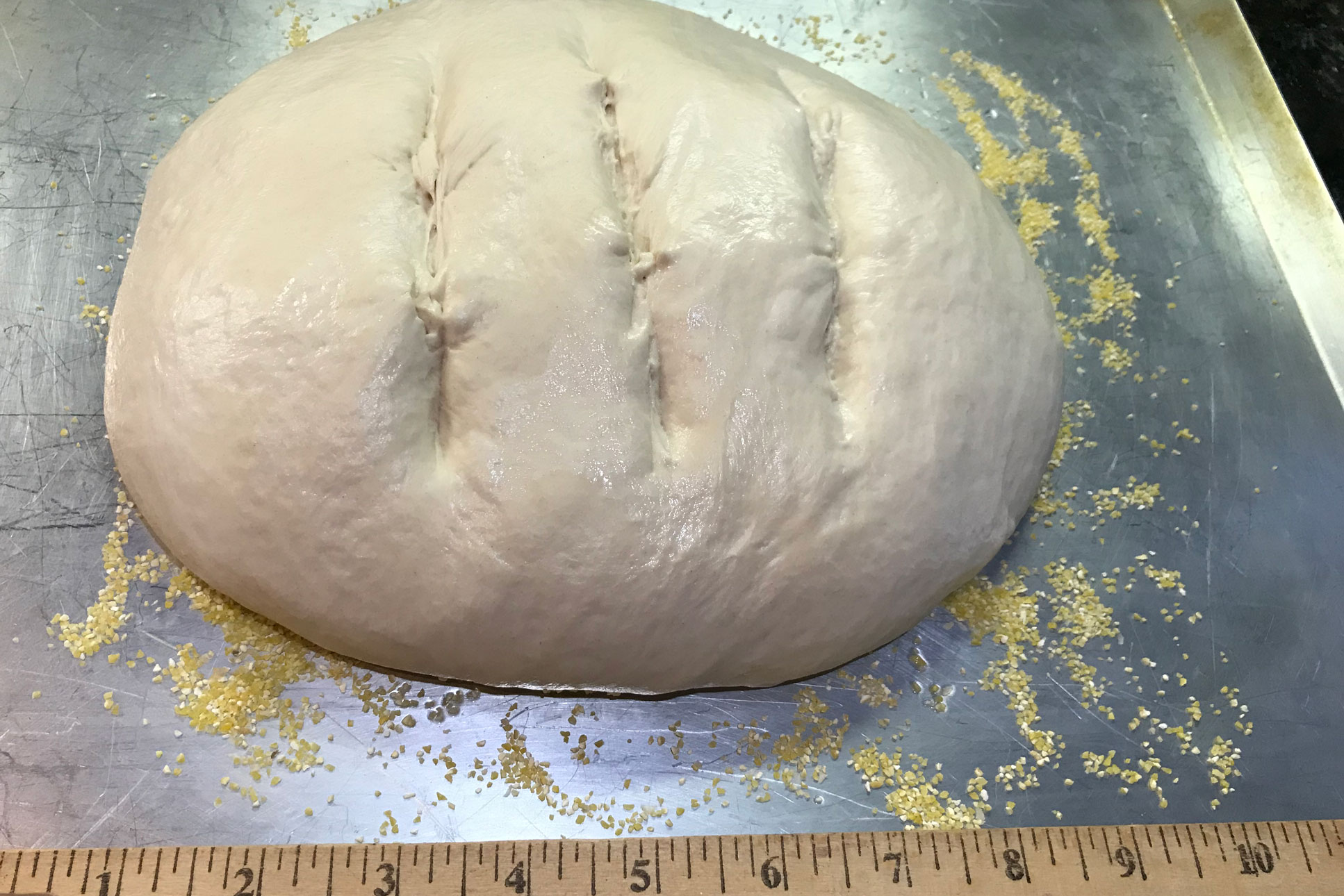
I didn’t have a razor blade nor, apparently, a sufficiently sharp knife, because slashing the loaf in several places to about 1/2 inch deep did not go very well.
Also in the recipe’s headnote, Beard mentions that this bread is best “baked in an oven in which the racks are lined with tiles,” a technique he explains earlier in the book. For the baking of my loaf, I put a pizza stone on the top rack of the oven before preheating the oven; I then baked the loaf directly on the stone. In hopes of making the moving of the raw formed dough from the pan to the stone easier, I used a sheet without edges on three sides to which I added what I thought was a sufficient amount of cornmeal to help get the soon-to-be-recalcitrant loaf onto the hot stone. The cornmeal I used was insufficient: With each push, the soft blob took on a new shape. Finally, after ten or so such pushes, it landed fully on the stone looking a little like a triangle:
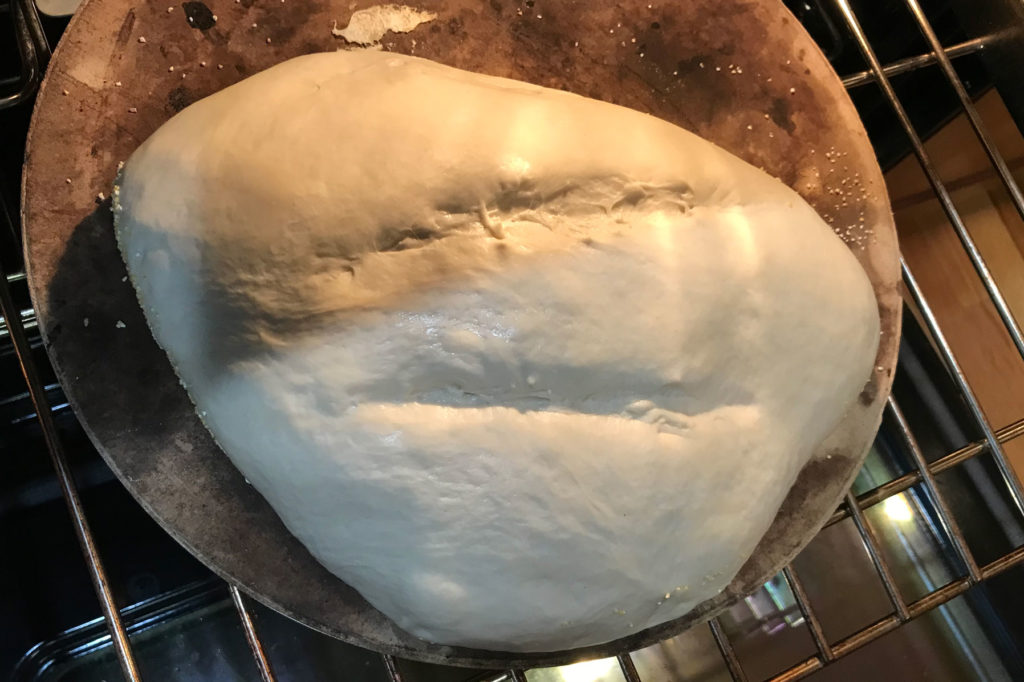
The last head-scratcher offered by Beard in this recipe: ” Bake … until the bread is a delicious-looking dark color …” Wow; that’s a tad subjective, no? The bread reached a dark honey brown before I took it out of the oven at the upper end of Beard’s prescribed baking time.
The result
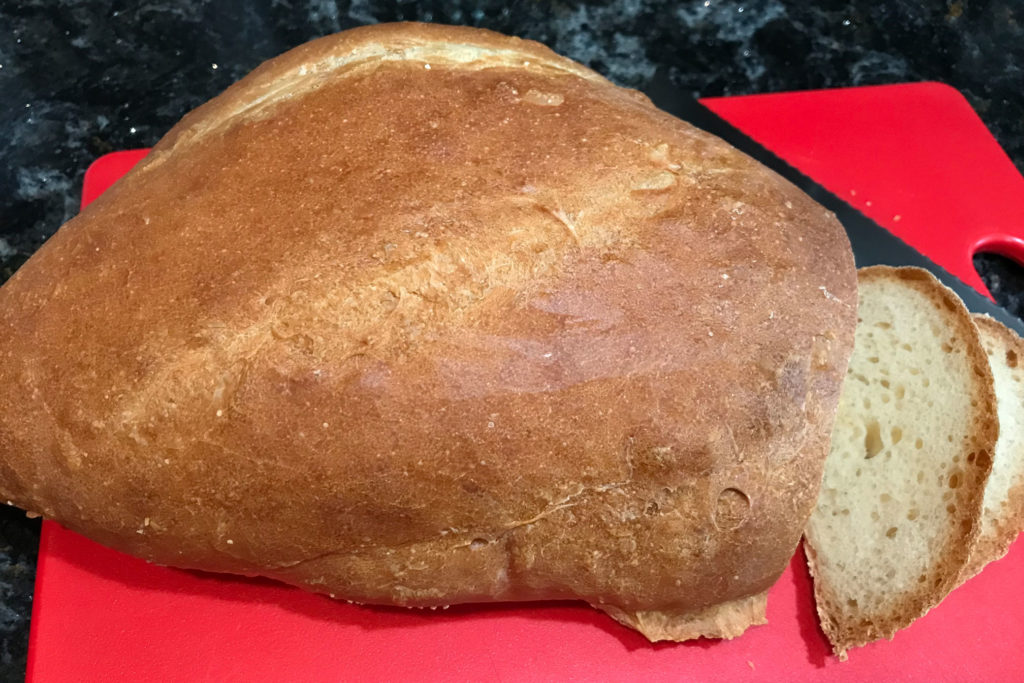
Oy, the ill-made slashes all but disappeared during baking.
Clearly this was not a sandwich loaf, due to its squat profile and that fact that same-size slices are near impossible to achieve. Because I baked this in a steamy oven on the pizza stone, I was expecting a crustier bread than I got, but that wasn’t a big deal; the loaf was easy to cut with a serrated knife and the toasted slices were plenty crusty. (That said, it was a tad challenging to cut the loaf across its widest part.)
Some of the slices had little yellow-colored swirls at the bottom; I’m assuming this was caused by moving the blob of dough around too much after placing it on the cornmeal. Also, the texture of the slices seems very slightly denser at the bottom of the loaf; I wonder if this means it could have risen a bit more before baking? If so, though, during which rising?
The loaf was a bit bland, but when sliced and toasted with a little jam or butter, it was delightful with a nice crust and chew. I would make this again.
The aftermath
I have almost a full quart of buttermilk left over. What to do … what to do … How about Beard’s Irish Whole-Wheat Soda Bread? (It’s only a week or two after St. Patty’s Day!) Stay tuned …
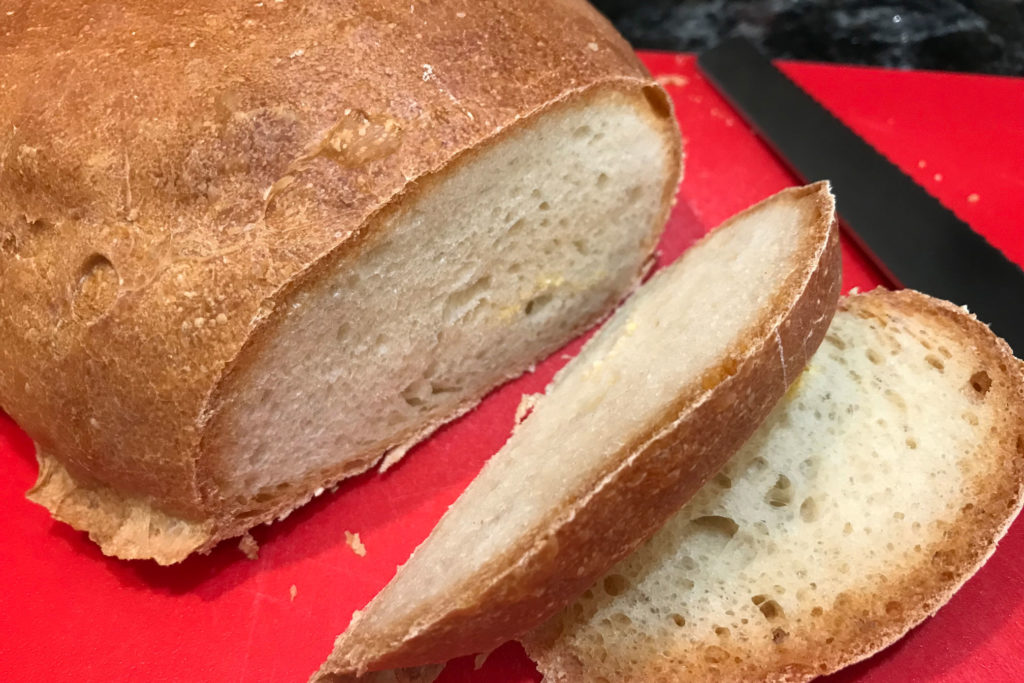
White Free-Form Loaf
[1 free-form loaf]
FOR THE SPONGE:
2 packages active dry yeast (I used ½ ounce SAF Red Instant Yeast.)
½ cup warm water (100° to 115°, approximately)
2 cups flour, preferably hard wheat (I used King Arthur’s Bread Flour.)
¾ to 1 cup water, approximatelyDissolve the yeast in the warm water, let it proof in a large mixing bowl, and start adding enough water to make quite a soft dough. When the sponge is well mixed, cover it with a plate or plastic wrap and refrigerate it 12 to 36 hours — one or two nights.
FOR THE BREAD:
3 tablespoons olive or other vegetable oil
½ cup buttermilk (I ended up using ¾ cup.)
2 cups flour, plus ½ cup for kneading
1 tablespoon coarse salt
CornmealWhen ready to make the bread, remove the sponge from the refrigerator, punch down, and place in a large mixing bowl. Add the oil, then gradually add the buttermilk and 2 cups of flour, mixed with the salt, to make a soft dough. Turn this out onto a lightly floured board, using another ½ cup flour or more, if need be, and knead for a good 10 minutes, until the dough is smooth, elastic, and resilient to the pressure of your fingers. Shape into a ball, and place in a buttered or oiled bowl, turning to lightly coat with the fat. Let rise until doubled in bulk at ordinary room temperature. (Because the sponge is cold when it comes out of the refrigerator, rising will probably take from 1½ to 2 hours, or even a little more.) When it has risen, punch down and let rest for a few minutes, then remove to a floured board and knead for 3 to 4 minutes. Place back in the bowl and let rise a second time until doubled in bulk, 1 to 1¼ hours.
Punch the dough down again and let rest for 2 or 3 minutes on the floured board, then shape into an oval, round, or oblong loaf and place on an ungreased sheet coated with cornmeal. Let rise in a warm, draft-free place until doubled in size, 1 to 2 hours—don’t worry if it’s slow. (If the dough seems to have spread a lot, resist the temptation to reshape it; it will make a good loaf anyway.) Preheat the oven to 425°, and set a pan of boiling water on the lower rack. Brush the loaf with cold water and slash about ½ inch deep with a razor blade or very sharp knife. Let rest at room temperature for about 5 more minutes, then place the baking sheet in the oven, on the upper rack. Immediately lower the temperature to 375°, bake for 20 minutes, then brush again with cold water. Continue to bake for 40 or 50 minutes longer, until the bread is a delicious-looking dark color and makes a hollow sound when tapped on top and bottom. Cool thoroughly before slicing.
Beard on Bread, James Beard, Knopf, 1974, p.37–39
White Free-form Loaf recipe from Beard on Bread by James Beard. Alfred A. Knopf, New York, 1974, p.37–39.
